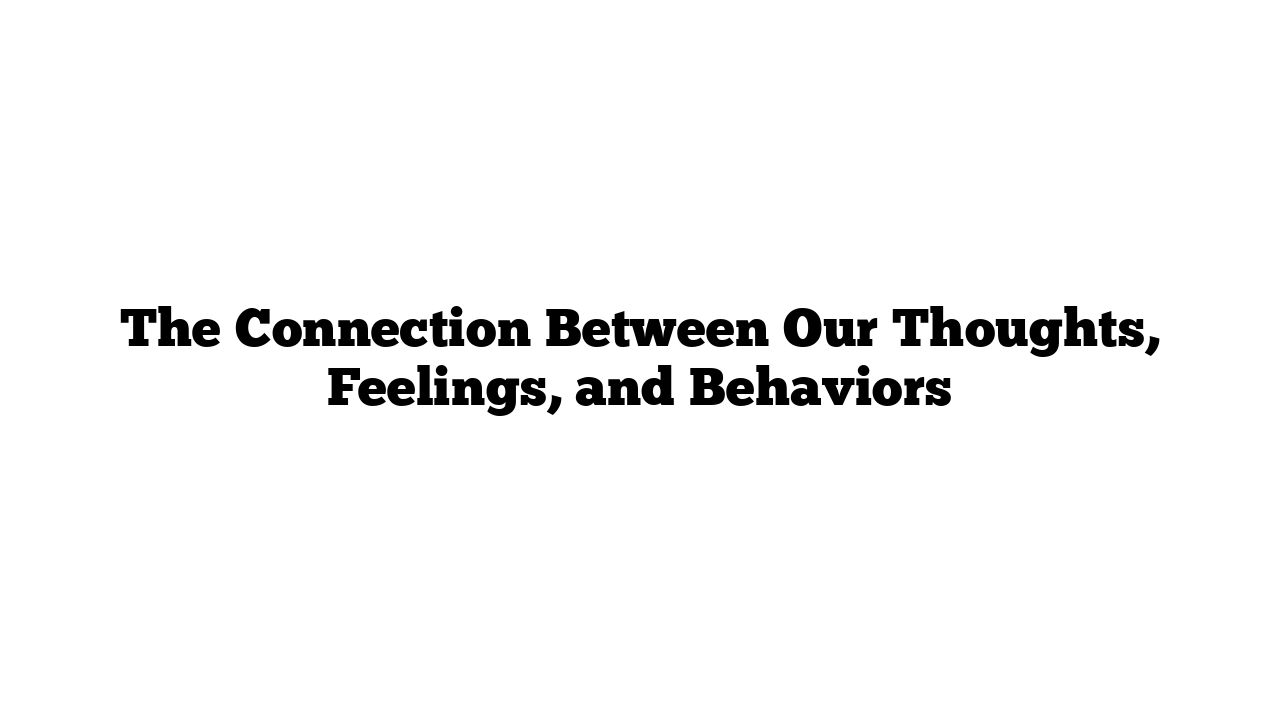Understanding how our thoughts influence our feelings and behaviors is fundamental to both psychology and personal development. Cognitive-behavioral theories emphasize that our mental processes significantly shape our emotional responses and actions. By exploring this intricate relationship, we can better manage our emotions, improve our mental well-being, and enhance our daily lives.
The Role of Thoughts
Our thoughts serve as the lens through which we interpret our experiences. For instance, when faced with a challenging situation, a positive thought pattern can foster resilience, while negative thinking can lead to feelings of despair. This phenomenon is often referred to as cognitive appraisal. It illustrates that the same event can evoke different emotional responses based on our interpretations and thoughts about that event.
Feelings as Responses to Thoughts
Feelings are often automatic responses triggered by our thoughts. For example, if you think about a past failure, you may feel disappointment or sadness. Conversely, if you focus on a recent success, you might experience pride and happiness. This connection between thoughts and feelings is vital for understanding how to navigate our emotional landscapes.
Behaviors Are Influenced by Emotions
Our behaviors are largely driven by our emotional states. When we feel happy, we are more likely to engage in social activities, whereas feelings of sadness might lead to withdrawal. This relationship highlights the importance of recognizing and regulating our thoughts to manage our emotions effectively. By becoming aware of negative thought patterns, we can replace them with positive affirmations or constructive thinking.
Cognitive Behavioral Techniques
Cognitive Behavioral Therapy (CBT) is a practical approach that demonstrates how changing negative thought patterns can lead to more positive emotions and behaviors. Techniques such as cognitive restructuring, mindfulness, and behavioral activation are employed to help individuals recognize and challenge their distorted thoughts. By doing so, they can alter their emotional responses and, ultimately, their actions.
- Cognitive Restructuring: This technique involves identifying negative thoughts, challenging their validity, and replacing them with more balanced or positive thoughts.
- Mindfulness: Practicing mindfulness encourages awareness of the present moment and helps individuals observe their thoughts and feelings without judgment. This can reduce anxiety and promote emotional regulation.
- Behavioral Activation: This strategy encourages individuals to engage in activities that can boost their mood, breaking the cycle of negative thoughts and feelings.
Practical Applications
Understanding the connection between thoughts, feelings, and behaviors can have practical applications in everyday life. For instance, when you notice negative thoughts creeping in, pause and evaluate them. Ask yourself if they are based on facts or assumptions. Then, try to replace them with more realistic and positive alternatives. This practice can lead to improved emotional health and more adaptive behaviors.
Conclusion
In conclusion, our thoughts play a crucial role in shaping our feelings and behaviors. By becoming more aware of this connection, we can take proactive steps to cultivate positive thinking patterns, regulate our emotions, and engage in behaviors that enhance our overall well-being. Embracing this understanding can lead to a more fulfilling and emotionally balanced life.
